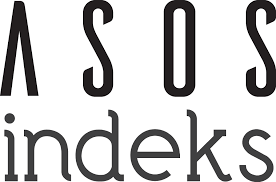
Makaleler Açık Erişimlidir ve Creative Commons Atıf-GayriTicari 4.0 Uluslararası Lisansı ile Lisanslanmaktadır.
Avrupa Gotik Resim Sanatında Rönesansa Doğru Sanat ve Mekansal Anlatının Önemi
Hatice ÇorbacıBatman Üniversitesi, Güzel Sanatlar Fakültesi, Resim BölümüGotik Resim Sanatı Bizans üslubunun hakim olduğu Orta Çağ Resim sanatından gelişmiştir. Cam boyamacılığı Romantik Dönemden beri bilinmektedir. Gotik yapıların planları gittikçe daha zarif ve pencereleri daha yüksek hale gelince cam resimleri ön plana geçmiş, yazma resimleri ise geri planda kalmıştır. Gotik mimarinin gelişimi sonrası resimde Gotik ve Neo-Bizans tarzının stil değişimlerinden yeni bir stil meydana gelmiştir. Bu yeni stilin en büyük ustası Giottodur. Cimabue ve Duccio, Giottodan önce yeni resim stilini denemişlerdir. Üç sanatçı da Tahtta Oturan Meryem ve Çocuk İsa tablosu yapmıştır. Giotto modern resmin gerçek yaratıcısıdır. Rönesans'ın yolunu açmıştır. Onun eserleri Cimabue veya Ducciodan tamamen farklıdır. Giottonun eserlerinde görülen mekanın temsili sanatta ilk büyük devrim sayılmıştır. Yüz yıllık Rönesans teorilerini önceleyen "perspektif" örnekleri ve üç boyutlu uygulama öne çıkmıştır. Giotto biçimlerine öyle bir üç boyutlu gerçeklik vermiştir ki, hacimli ve bağımsız plastikler gibi etki bırakırlar. Giottonun biçimleri havada asılı duran biçimler değil, kütlesi ve bedenlerinin hacmi olan biçimlerdir. Ayrıca, insanın fizikselliği ve duygusallığı bakımından temsiline özen gösterilmiştir. Giottodan sonraki sanat natüralist bir anlayışta ilerler ve doğa gözlemleri sınırları genişleyerek sanat yaşamı zenginleşir. Giottoyu takip eden sanatçılar zamanla Avrupanın her bölgesinden gelen sanat yeniliklerini uygularlar. Bu üsluba Uluslararası Gotik denmektedir. 1420 tarihinde Hollandada Gotik resimde gerçekçiliği ileri götüren çalışmalar olmuştur. Resmin yanı sıra mimari ve plastik de birlikte gittiği için bu döneme orada Erken Rönesans, Avrupanın kuzeyinde Geç Gotik denir.
Anahtar Kelimeler: Gotik Resim Sanatı, Giotto, Uluslararası GotikThe Importance of Art and Spatial Narrative in European Gothic Painting Towards the Renaissance
Hatice ÇorbacıBatman University, Faculty of Fine Arts, Painting DepartmentGothic Painting Art developed from the Medieval Painting Art, which was dominated by the Byzantine style. Glass painting has been known since the Romanic Period. Following the development of Gothic architecture, a new style emerged from the stylistic changes of the Gothic and Neo-Byzantine styles in painting. The greatest master of this new style is Giotto, though Cimabue and Duccio experimented with it before him. All three artists painted the painting "Mary Sitting on the Throne and the Child Jesus". Giotto is the true creator of modern painting. Giotto paved the way for the Renaissance. His works are completely different from those of Cimabue or Duccio. The spatial arrangement seen in Giotto's works is considered the first great revolution in art. Examples of "perspective" and three-dimensional application emerged that preceded the centuries-old Renaissance theories. Giotto gave such a three-dimensional reality to his forms that; they have the same effect as bulky, free-standing plastics. His forms are not suspended in the air but have mass and the volume of their bodies. Art after Giotto progresses with a naturalistic understanding and as observations of nature expand, artistic life becomes richer. The artists who followed Giotto gradually applied artistic innovations from all parts of Europe. This style is called International Gothic. In 1420, in the Netherlands, there were works that took realism forward in Gothic painting. Since painting, architecture, and sculpture went hand in hand during this period, it is called Early Renaissance in Italy and Late Gothic in Northern Europe.
Keywords: Gotic Painting Art, Giotto, International GoticMakale Dili: Türkçe











